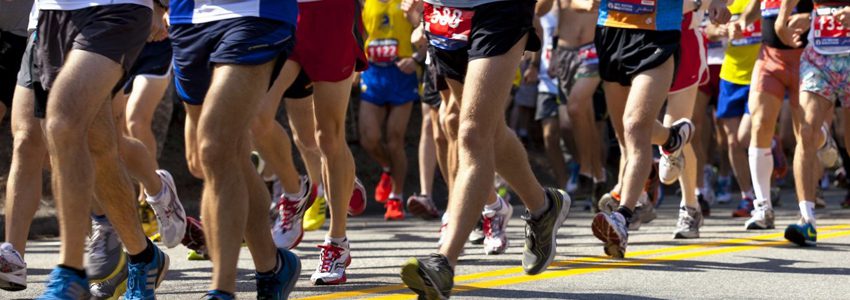The New Year is just around the corner, and while some people will be making resolutions to eat healthier or get more sleep, others will be pledging to run a marathon – or several.
Running a marathon places great strain on muscles and joints, even for seasoned runners. People in travel physical therapy jobs have a big role to play in whether people follow through with their running resolutions, or put them off until next year. Here’s how travel PTs can help marathoners reach their race goals in 2018:
Be realistic
It’s a common situation: An individual who has never run a mile in their life says that they want to run a marathon in a week or two. Running a race safely requires ample and intentional preparation and training. Putting too great a demand on the body without proper training can lead to serious injury. Travel physical therapists should let patients know of the work that will be required as well as help them set realistic expectations. They also need to temper the expectations of seasoned runners who think they can get back to pounding the pavement with the same intensity right after an injury or training hiatus.
 PTs should help runners set realistic expectations.
PTs should help runners set realistic expectations.“We try our hardest – and often it works out – but I think unfortunately there are some people who have unrealistic expectations about what we can do for them, especially when they’re coming in at the tail end of a serious problem,” said Frank Ruggiero of Integrative Physical Therapy of NYC in an interview with The New York Times.
Whether the person is an experienced runner or novice, travel PTs can support their patients to reach their running goals for the new year by helping them set realistic expectations and establish a safe training plan.
Zone in on weak spots
Every individual has unique weak spots in their muscular system that can make them prone to injury.
“All runners have inefficiencies in their form,” said Bryan Heiderscheit as quoted in The Physical Therapist’s Guide to Healthy Running from the American Physical Therapy Association. “They may be subtle, but finding them uncovers opportunities to make the body stronger and more tolerant of rigorous training.”
APTA recommends that PTs conduct gait analyses with the help of software to pinpoint weak spots and make recommendations for improvements.
Promoting proper movement and making recommendations on form is more effective and accurate when people wear their running shoes to their PT appointments. As runner and PT Lee Stanton explained in an interview with the University of Vermont Medical Center, many injuries can be traced back to sneakers not fitting right or providing sufficient support, so having people run in their own shoes during the appointment can help the PT more clearly identify and problems.
With the tips above, travel therapists can help marathoner’s safely succeed at their running resolutions in the new year.


Great post. Physicians can be helpful in many ways.